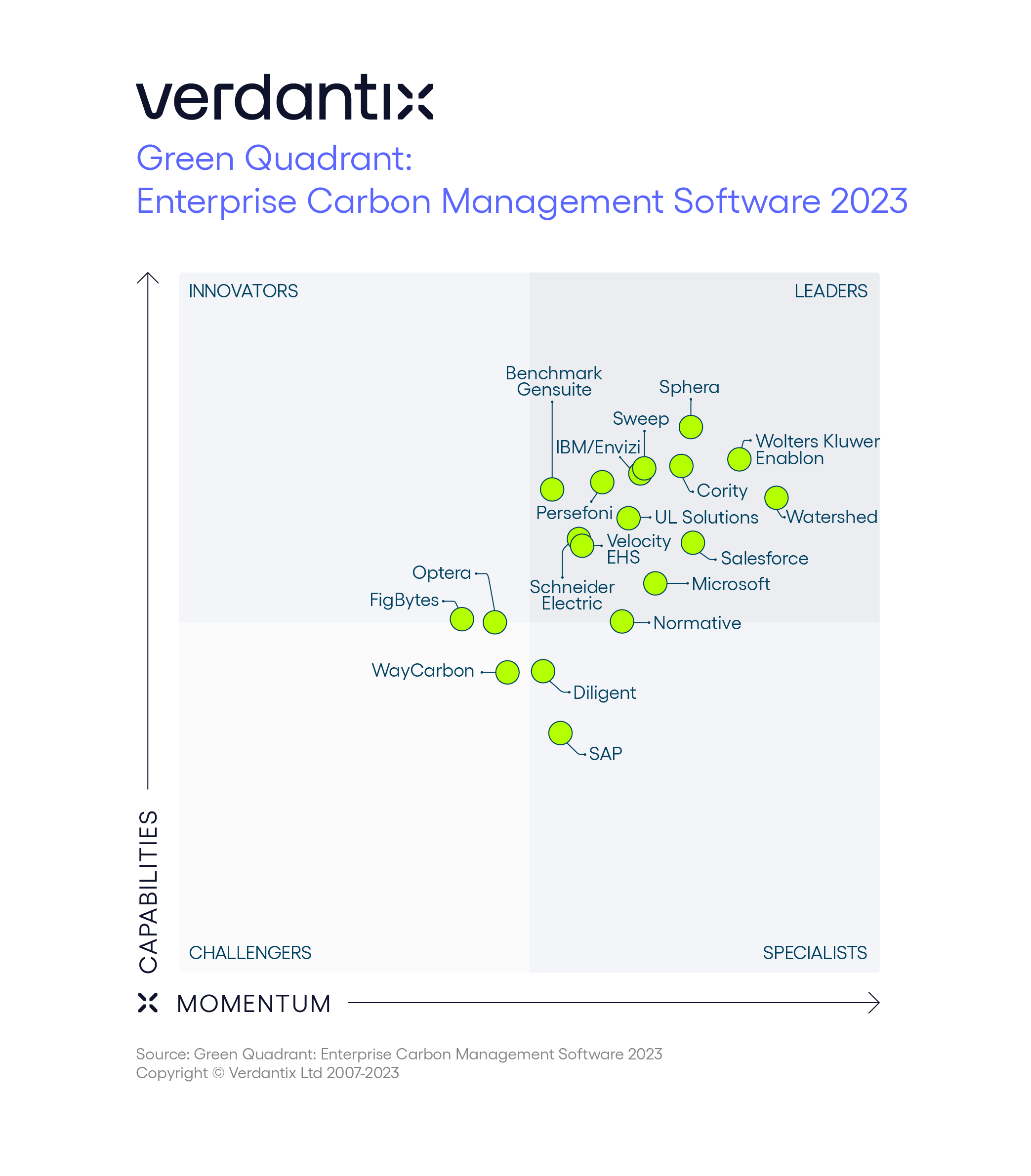Key Functionalities Reflected In The 2023 Carbon Management Software Green Quadrant Report

Adam Barnard
The latest Verdantix benchmark analysis of carbon management software vendors reveals differentiating capabilities in audit, Scope 3 emissions, AI integration and net zero programme management.
The Verdantix Green Quadrant: Enterprise Carbon Management Software 2023 report provides an overview of the enterprise carbon management software market, highlighting the capabilities and market momentum of the 19 most prominent vendors: Benchmark Gensuite, Cority, Diligent, FigBytes, IBM, Microsoft, Normative, Optera, Persefoni, Salesforce, SAP, Schneider Electric, Sphera, Sweep, UL Solutions, VelocityEHS, Watershed, WayCarbon and Wolters Kluwer Enablon. This analysis, enriched by extensive live briefings and a comprehensive 70-point questionnaire, as well as buyer interviews, uncovers the pivotal trends and features shaping this dynamic sector.
The critical role of carbon management software
With the expansion of both regulatory requirements and voluntary commitments for carbon emissions reporting and decarbonization, more and more sustainability leaders tell us that they are investing in carbon management software. In a recent survey, over 40% of corporate leaders told us that they would increase their spend on carbon accounting over the next two years.
This surge in demand is expanding the market, which is anticipated to grow from $407 million in 2022 to $1.2 billion by 2028, representing a compound annual growth rate (CAGR) of 20% (Market Size And Forecast: Carbon Management Software 2022-2028).
Evolving market dynamics and functionalities
The carbon management software landscape is rapidly evolving, integrating decarbonization features into its core framework of emissions tracking and reporting. These advancements enable more departments across an enterprise – such as finance, operations and compliance – to contribute towards climate targets. Accordingly, these teams are increasingly involved in vendor selection.
Transformative features in carbon management software
Key functionalities highlighted in the report include:
- Audit-readiness and quality assurance: Preparation for the audit and assurance requirements described in the EU’s Corporate Sustainability Reporting Directive (CSRD).
- Scope 3 emissions data acquisition: Tools to collect and analyse Scope 3 emissions data, covering the entire value chain from upstream suppliers to downstream product use.
- Comprehensive emissions calculation: Engines for calculating Scope 1, 2 and 3 emissions so that firms can perform detailed carbon footprint assessments.
- AI and machine learning integration: Incorporation of AI and NLP technologies enhances data analysis, ensuring accuracy and insightful decision-making.
- Industry-specific customization: Solutions now provide tailored data sets and tools that accommodate the unique requirements of different industries.
- Net zero strategy tools and programme management: Features for setting, monitoring and managing net zero targets, decarbonization initiatives and progress tracking.
Verdantix clients can access the full, in-depth report with scoring of 12 capability and 6 market momentum categories here.

About The Author

Adam Barnard
Principal Analyst





